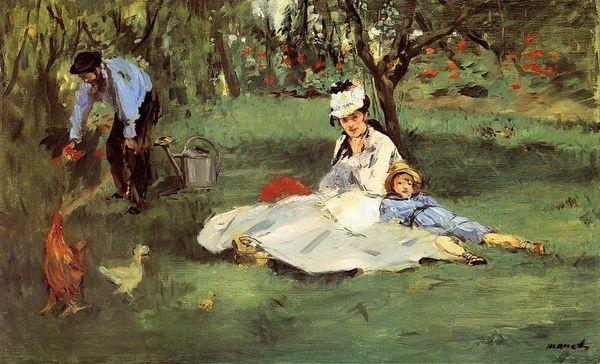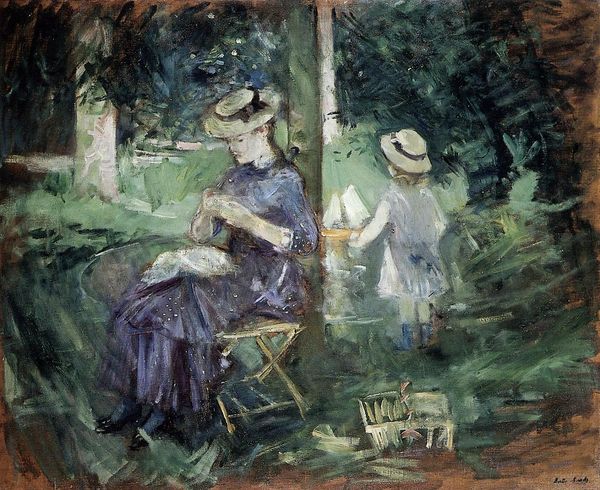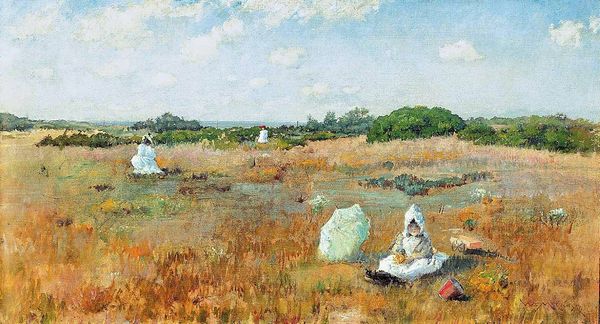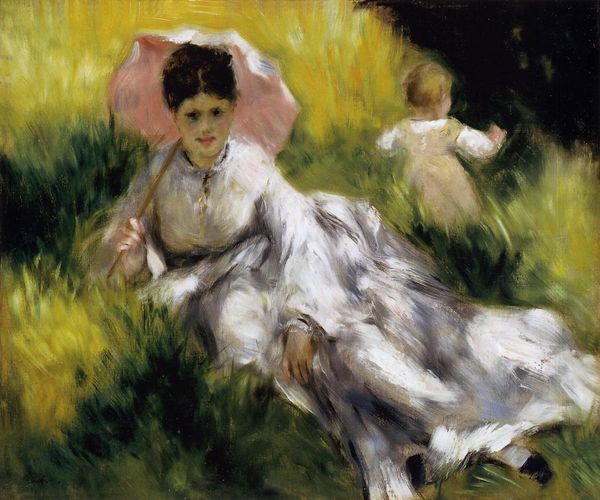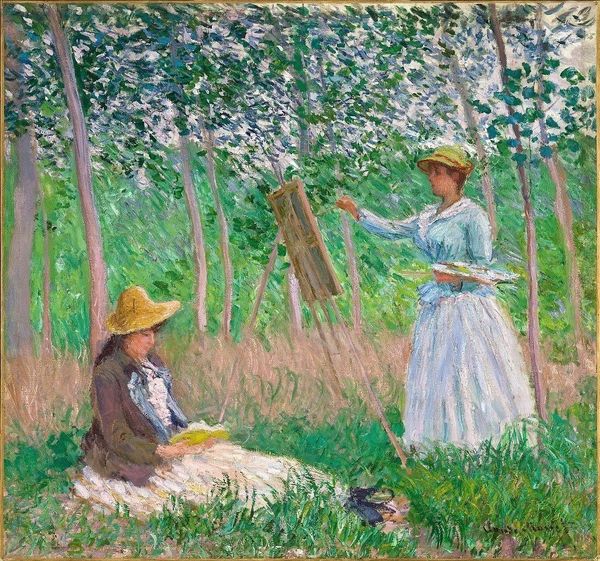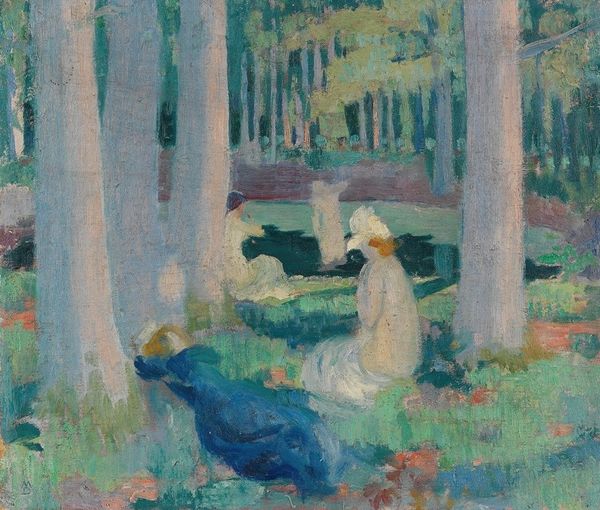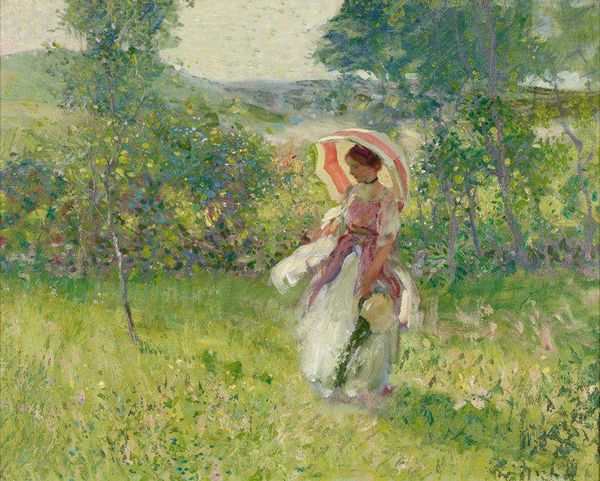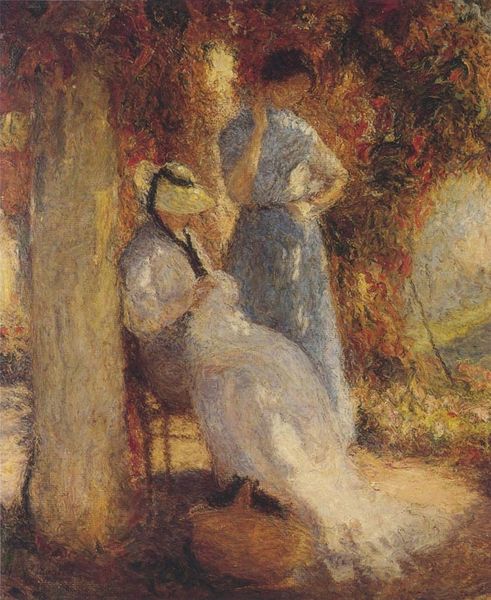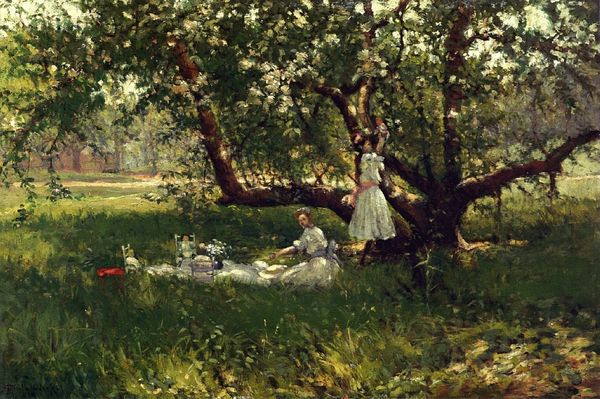
Dimensions: 54 x 64.8 cm
Copyright: Public domain
Curator: Claude Monet’s "Painting by the Edge of a Wood," completed around 1885 and currently residing here at the Tate Modern, offers an intriguing glimpse into the artist’s process. Editor: It feels like a scene captured mid-breath—an immediate impression more than a carefully constructed reality. Look at how the light filters, almost dissolving the figures into their surroundings. Curator: Notice how Monet positions himself within the painting itself. The figure painting by the edge of the wood reminds me of artistic self-portraits through time. It invites the viewer into this very personal and internal space, of creation. Is this, in effect, a sort of artistic echo? Editor: I'm drawn more to the immediacy of the labor. Think about the specific brushes used, the impasto layers built up rapidly to capture fleeting light and the cool, almost tactile relationship to place, painting en plein air. The means by which Monet brings to life what surrounds him feels paramount. Curator: Beyond that technical process, there is an almost reverent dialogue with nature occurring. Monet captures nature at the edge of the woods as muse but the female figure offers, at the same time, an allegorical sense of a certain historical understanding of female artistry as bound to landscape and place. The forest could represent the space where women were allowed to feel free or wild. Editor: But the subject becomes the surface itself! The application of the oil, those loose brushstrokes—they disrupt any illusion. Instead, they foreground the making of the artwork. It calls attention to its status as artifice as much as image. Monet isn’t only recreating nature; he’s making visible how he engages with its materiality. Curator: Perhaps he invites us to consider our engagement as well, through that depicted figure seated among the trees. Who are we, in relation to art, to nature, and to each other? What symbols or signs are evoked or made conscious again, for us, by seeing such art and witnessing what happens when it’s being made? Editor: For me, the sheer physical act and immediate engagement with material forces shape our perception. Monet grapples not only with what to paint, but with how to wrestle light and form onto the canvas itself, laying the groundwork for the modernist experimentation with art and reality that comes afterward. Curator: Beautifully stated. "Painting by the Edge of a Wood" certainly gives us much to ponder regarding process and place. Editor: Indeed. A small window into not only a single creative act, but also what came to matter most for artists after him.
